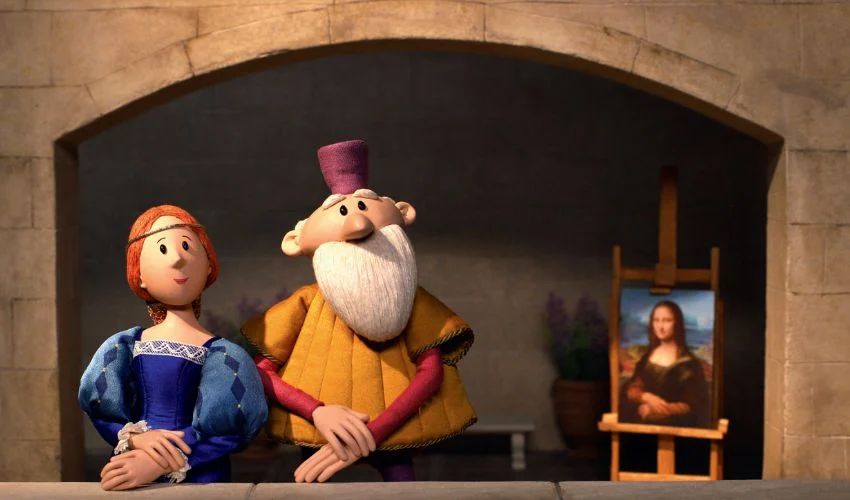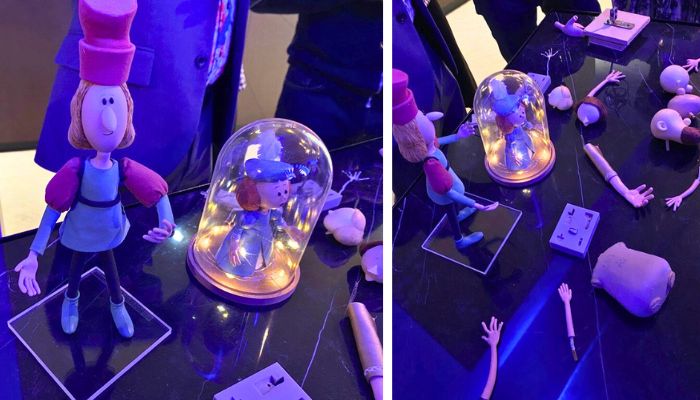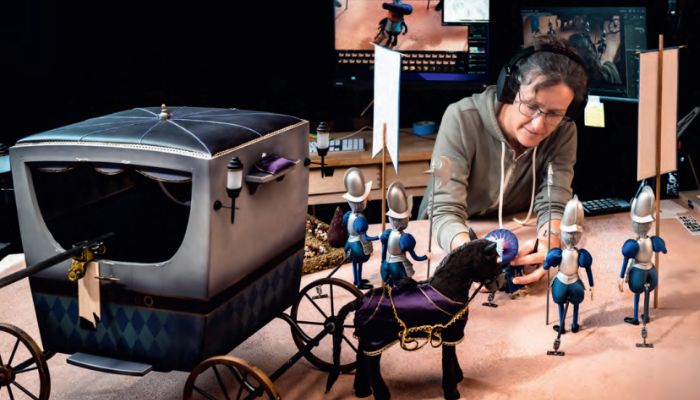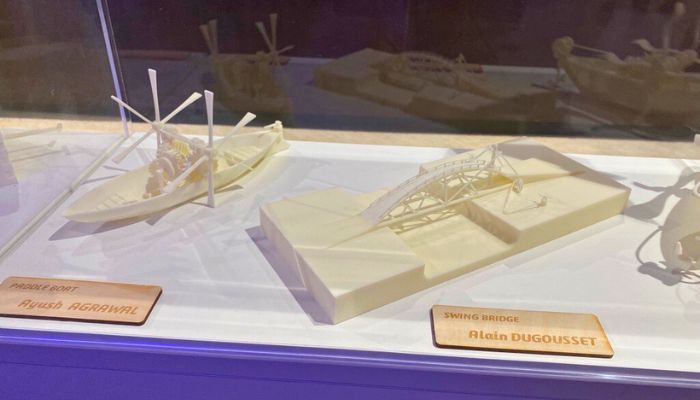3D Printing Stars in New Animated Film About Leonardo Da Vinci

The legendary genius of Leonardo da Vinci never ceases to inspire in the sciences, architecture, engineering, and the arts, from the rereading of human nature to anatomy. Leonardo was a true, all-around ‘Renaissance man’ the likes of which the world has rarely ever seen, which is why we never tire of this unique historical figure. The latest piece of work inspired by Da Vinci’s story is the latest stop-motion animated film “The Inventor,” by Jim Capobianco in collaboration with French co-director Pierre-Luc Granjon and animation director Kim Keukeleire. Within this star-studded cast with Marion Cotillard, Daisy Ridley, Matt Berry, and Stephen Fry voicing the legendary inventor, we find history, art and technology, philosophy and astrology … and a surprising cast member: 3D printing!
Indeed, additive manufacturing was crucial in the production of the film, to make parts of Leonardo’s puppets and machines. Capobianco relied on French animation studio Foliascope and 3D technologies from Dassault Systemes throughout the production process. The 3D printing of the parts, on the other hand, was the work of the company, Initial. The film, first released in September 2023 in the United States, now lands in Europe. To learn more, 3Dnatives attended a private screening in Paris that anticipated the film’s release in French theaters on January 31st, 2024.

The puppets that appear in the film were made by hand with the help of 3D printing. (Credits: 3Dnatives)
Although an animated film, “The Inventor” is a great flick for young and old alike. It recounts Leonardo’s life in Italy, his clashes with the Pope in Rome and finally his choice to continue his studies in France, not without making some compromises. The production of this film rich in artistic and historical details took about two years. The production of the puppets alone, entrusted to the Foliascope studio, took a year, while another year was needed to make the film in stop motion.
What is especially interesting is the combination of meticulous craftsmanship and new technology in the production of the film’s characters. The bodies of the puppets were made and assembled by hand, while the feet of the puppets were made with LPBF metal 3D printing technology to give them the desired shape and make them stronger and easier to move.

To make each scene of the film in stop motion, it was necessary to take a picture of each movement of the puppets, and then combine them into a montage. (Credits: theinventorfilm-Jean-Marie Hosatte)
Not surprisingly, there is masterful work behind this film. American screenwriter Jim Capobianco, who wrote and directed “The Inventor”, is credited with several animated films of the caliber of “The Lion King,” “Coco,” “Finding Nemo,” and an Oscar nomination for the film “Ratatouille,” to name but a few. Today, with this film he signs his first feature film as author and director and says he chose France to make the film to pay homage to the places where Leonardo lived. “I wanted to delve into the life of Leonardo da Vinci as a human being, as well as a genius,” commented Jim Capobianco, “to also bring to the scene his experience, the move from Italy to France, the difficulties he encountered, the people who accompanied him.”
Another interesting detail about the production of this feature film was the Challenge launched to make Leonardo’s models to be represented in the film. Dassault Systèmes’ 3DEXPERIENCE Lab launched the “OpenCodex Challenge” to bring Leonardo’s sketches to life. The challenge involved the world’s best designers clustering in the OpenCodex community who could use Dassault Systèmes’ 3D software to reconstruct the inventor’s models and machines and better understand how they worked.

Some of the models of the 3D printed OpenCodex Challenge winners. There were five winners and their designs are now part of the film. (Credits: 3Dnatives)
“With this film, we have the ambition to inspire young people towards science and technology, we need these talents. The production of the future is digital and 3D,” emphasizes Frédéric Vacher. “Bringing together The Worlds of Science, Technology and the Arts will contribute to a more sustainable future.”
Following the Oscar win of Guillermo del Toro’s “Pinocchio,” where the world’s most famous puppet was made using 3D printing, “The Inventor” undoubtedly represents another step forward in bringing 3D printing technologies to the big screen. Prototyping, the creation of customized final parts, simplicity and speed of fabrication, the ability to visualize and imagine complex 3D parts and then print them, as in this case, are just some of the many possibilities of additive manufacturing in filmmaking.
What do you think of the movie “The Inventor” and the use of 3D printing in its filming? Let us know in a comment below or on our Linkedin, Facebook, and Twitter pages! Don’t forget to sign up for our free weekly Newsletter here, the latest 3D printing news straight to your inbox! You can also find all our videos on our YouTube channel.
*Cover photo credits: Curiosity Studio Limited






